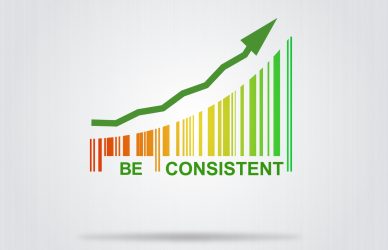Introduction
The digital landscape is ever-evolving, and with it, web design continues to transform. From the text-heavy pages of the early internet to the visually driven, interactive experiences of today, web design has seen significant changes. This blog explores the evolution of web design, highlighting past trends and examining what’s trending now.
The Early Days of Web Design
- The 1990s: Text-Based and Functional
The early internet was a utilitarian space dominated by text and minimal graphics. Websites were mostly HTML-based, with blue hyperlinks and long paragraphs of information. The design was purely functional, focusing on information delivery rather than aesthetic appeal.
2. The 2000s: The Rise of CSS and Flash
The internet’s mainstream growth led to a surge in visual appeal, with CSS separating content from design and Flash revolutionizing animations, video, and interactivity.
The Shift Towards User-Centric Design
1. The 2010s: Responsive Design and Mobile First
With the advent of smartphones, responsive design has become essential. This era marked a shift towards mobile-first approaches, ensuring websites looked good on devices of all sizes. The focus was on user experience, with designs becoming more intuitive.
2. Flat Design and Minimalism
The flat design emerged as an antidote to the skeuomorphic designs that tried to emulate real-life properties. This trend favored simplicity and functionality, featuring clean lines, clear typography, and bold color schemes without gradient textures or 3D illusions.
Current Trends in Web Design
1. Neumorphism
Neumorphism, a popular design trend, uses subtle shadows and light to create soft extrusions or intrusions on a flat background, enhancing the realism of flat designs.
2. Dark Mode
Dark mode has gained traction for its sleek look and the benefits it offers, such as reduced eye strain and lower battery consumption on mobile devices. More websites now offer users the option to switch to dark mode, enhancing accessibility and user preference.
3. Advanced Interactivity and Micro-Interactions
Advanced interactivity technologies like CSS3, HTML5, and JavaScript enable dynamic web pages with micro-interactions, enhancing user experience and providing feedback.
4. AI and Personalization
Artificial Intelligence (AI) is being leveraged to create highly personalized user experiences. AI technologies can analyze user behavior to provide tailored content, recommendations, and interactions, making websites smarter and more user-centric.
5. Accessibility and Inclusivity
There is a growing focus on making web design more accessible and inclusive. This includes ensuring website accessibility for people with disabilities and designing for inclusivity to cater to a broader audience, reflecting global diversity in design elements and content.
Looking to the Future
The future of web design promises even more personalization with advancements in AI and machine learning. As virtual reality (VR) and augmented reality (AR) technologies mature, they could redefine user interactions on websites, offering more immersive experiences.
Conclusion
Web design, a blend of art, technology, and psychology, aims to create meaningful user experiences. Future trends will be influenced by technological advancements and human interaction.
#WebDesign #DigitalTrends #UXDesign #ResponsiveDesign #WebDevelopment #FutureOfWebDesign




